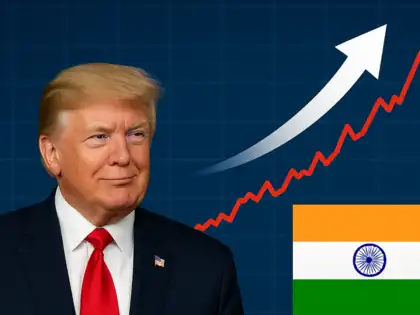The ripple effects of former U.S. President Donald Trump’s newly proposed tariffs on imports have begun to reach Indian shores, with businesses across multiple sectors—ranging from textiles and chemicals to food and startups—feeling the heat. Although India remains optimistic about meeting its 2025/26 growth target of 6.3% to 6.8%, Moody’s Analytics has downgraded its growth forecast to 6.1%, citing the potential economic drag from tariff-induced trade disruptions.

The U.S. remains one of India’s top trading partners, and the tariff hikes threaten key export-dependent sectors. India’s centuries-old Kashmiri carpet industry, a vital part of its handicrafts exports, is already grappling with order cancellations and weakening demand from the U.S. Similarly, the pharmaceutical industry—one of India’s strongest export performers—is cautiously watching the developments. Industry leaders say while there may be temporary setbacks, India’s dominant position in the U.S. generic drug market could help insulate it against prolonged damage.

In the food sector, India’s $7 billion shrimp export industry is particularly vulnerable. More than 300,000 farmers, primarily from Andhra Pradesh, rely on shrimp farming for their livelihoods. While some U.S. importers are reportedly willing to absorb higher costs, exporters like Coastal Corporation are actively diversifying to markets in China, Russia, and Canada. Adding to the uncertainty, Indian food startups sourcing niche ingredients such as native spices are experiencing cost escalations and logistical delays, prompting them to shelve expansion plans and rethink their operational models.
The chemical industry presents a mixed picture. The U.S. tariffs on Chinese chemicals have opened up opportunities for Indian chemical exporters to capture market share, especially in sectors like dyes, agrochemicals, and intermediates. However, this silver lining comes with its own risks. An overflow of Chinese goods into other global markets could heighten competition for Indian firms. Additionally, any reciprocal U.S. duties targeting Indian specialty chemical products may compress profit margins further.
Startups and SMEs are particularly exposed. With rising input costs and disrupted supply chains, many are scaling back or shifting strategies altogether. Those in consumer food products, wellness, and tech-enabled services that depend on cross-border trade are finding it difficult to balance growth ambitions with sudden regulatory volatility.
Amid this backdrop, the Indian government is doubling down on diplomatic channels to mitigate long-term fallout. New Delhi is reportedly negotiating with Washington to suspend the 26% tariffs on Indian goods until a broader Bilateral Trade Agreement (BTA) is finalized, expected later this year. Efforts are also underway to secure temporary tariff relief for high-performing sectors such as electronics, textiles, and engineered goods.
Currency movements have provided some cushion. The Indian rupee appreciated for the third consecutive session, bolstered by global investor sentiment moving away from the U.S. dollar in light of rising protectionist rhetoric. Meanwhile, concerns are also growing over India’s record-high trade deficit with China, which surged to $99.2 billion. Analysts fear that Chinese exporters, squeezed out of the U.S. market, may begin flooding India with cheaper goods, especially in electronics and renewable energy components.
While the situation remains fluid, India’s long-term strategy appears to be one of resilience and diversification. Initiatives like ‘Make in India’ and targeted export incentives are being leaned on heavily to navigate through the choppy waters of global trade uncertainty. A favorable trade agreement with the U.S. could potentially turn the tide and help restore investor confidence in India’s export-driven sectors.
